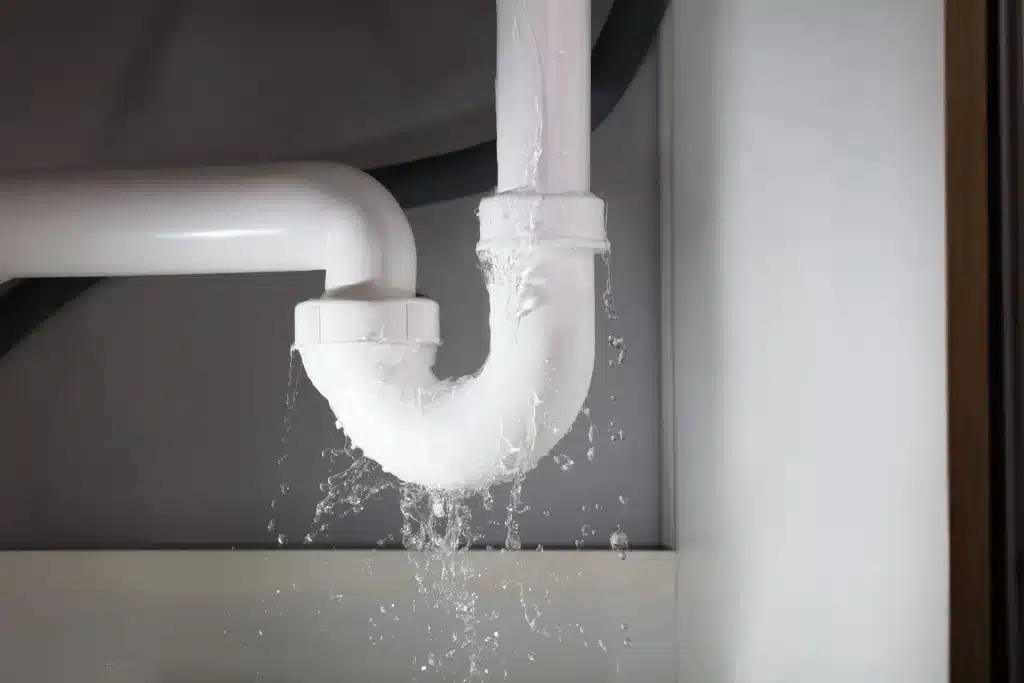Silent leaks in your home are classic culprits of water waste, stealthily escalating your water bills and detrimentally impacting the environment. Often unnoticed until they’ve caused significant damage or loss, these leaks demand early detection and swift action.
This post will illuminate the common, yet frequently overlooked, sources of water leaks within residential settings. By empowering homeowners with the knowledge to identify and rectify these silent leakers, we aim to foster water conservation, safeguard your property from potential harm, and contribute to the broader environmental effort of preserving our precious water resources.
Common Sources of Silent Leaks
Silent leaks, those hidden drips and flows going unnoticed, can originate from several common household fixtures, leading to substantial water waste over time. Among the usual suspects, toilets often lead the charge.
A malfunctioning flapper or a misaligned float can quietly let the water trickle from the tank to the bowl, a subtle flaw that can significantly hike up water usage. taps, too, are frequent offenders; worn-out washers or deteriorating o-rings under the sink can result in a continuous, yet unseen, water seepage. Showerheads, with their potential for mineral buildup, might start dripping slowly, causing unnoticed losses. The most elusive are underground leaks in irrigation systems or supply lines, where water escapes directly into the earth, leaving no visible trace above the ground.
These silent leakers not only contribute to environmental depletion by wasting water but also silently inflate utility bills. Regular maintenance and vigilance are key to identifying these hidden sources of water waste in your home, ensuring both economic and ecological benefits.
Detecting Silent Leaks
Detecting silent leaks within your home is crucial for preventing water waste and safeguarding against potential structural damage. While these leaks may go unnoticed due to their hidden nature, there are effective strategies to uncover them before they escalate.
- A primary method is the water meter test, which involves turning off all water usage and monitoring the meter for any activity, a change indicates a possible leak.
- Another specific technique for toilets, often silent leak hotspots, is the dye test. Adding food colouring to the tank and observing any colour seepage into the bowl without flushing can reveal leaks.
- Beyond these, conducting regular visual and auditory inspections around your home is key. Check under sinks, around appliances, and any plumbing fixtures for signs of moisture, mildew, or the sound of running water when all taps are turned off.
- Since some leaks may be located in areas not easily visible, such as beneath the foundation or within walls, considering a professional assessment becomes invaluable.
A licensed Sydney plumber possesses specialised equipment like acoustic detectors and thermal imaging cameras, which can accurately locate even the most elusive leaks. Taking a proactive approach to leak detection not only aids in water conservation efforts but also prevents the gradual deterioration of your home’s infrastructure, ensuring its longevity and the well-being of its occupants.
By employing these strategies, homeowners can effectively manage their water usage, contributing to environmental sustainability and enjoying peace of mind.
Consequences of Ignoring Leaks
Ignoring silent leaks in your home can lead to a cascade of undesirable consequences, both financially and environmentally. Even minor leaks can cumulatively waste thousands of gallons of water annually, significantly inflating your water bills without you even realising the cause. This not only strains your household budget but also contributes to the unnecessary depletion of vital water resources, exacerbating the global challenge of water scarcity.
The environmental impact extends beyond mere water waste. The energy consumed in treating and pumping water to your home is also wasted when leaks occur, leading to increased carbon emissions and further environmental degradation. On a more personal level, unchecked leaks can cause extensive damage to your home. Persistent moisture from leaks fosters the growth of mould and mildew, compromising indoor air quality and potentially triggering health issues such as allergies and respiratory problems. Additionally, water damage from leaks can weaken the structural elements of your home, leading to costly repairs.
Therefore, addressing leaks promptly is not just about water conservation but also about safeguarding your health, protecting your home’s integrity, and mitigating your environmental footprint. The cumulative effect of ignoring leaks can be far-reaching, emphasising the importance of vigilance and timely intervention.
Preventive Measures and Solutions
Preventing silent leaks is crucial for conserving water, saving money, and maintaining a healthy home environment. Here are effective measures and solutions to mitigate the risk:
- Regular Inspections: Periodically check all plumbing fixtures, including toilets, faucets, and showerheads, for signs of wear or damage.
- Install Leak Detectors: Utilise smart home technologies that alert you to the presence of leaks, even in hard-to-see places.
- Routine Maintenance: Replace worn parts like washers, seals, and hoses before they fail. Consider professional inspections for systems not easily accessible.
In addition to these steps, adopting water-efficient fixtures can make a significant difference. Low-flow toilets, taps, and showerheads reduce water consumption, diminishing the likelihood of leaks and their impact. Moreover, being mindful of what goes down your drains can prevent clogs and backups, common sources of leaks. For outdoor plumbing in Hornsby, ensure irrigation systems are correctly installed and maintained to avoid underground leaks.
By integrating these preventive measures, homeowners can significantly reduce the incidence of silent leaks. Not only does this approach promote sustainability, but it also helps safeguard the structure and health of your home, ensuring peace of mind and financial savings in the long run.
Thank you for reading we hope this article has been beneficial to you!
